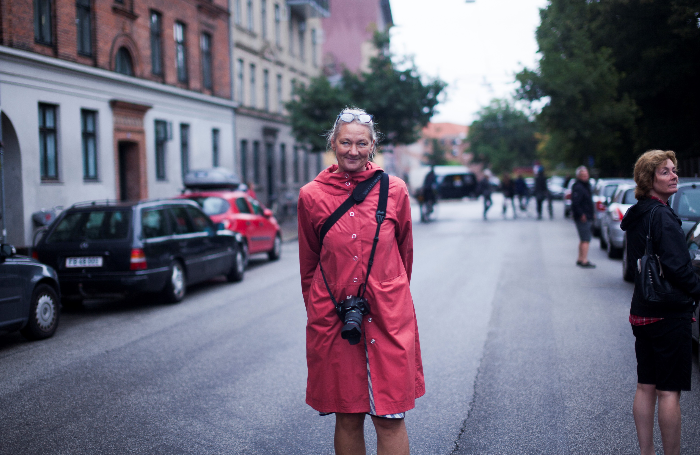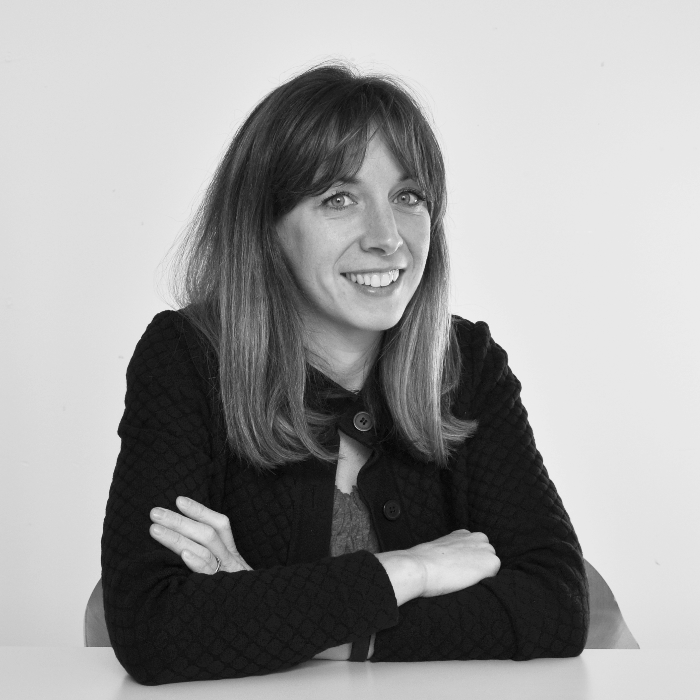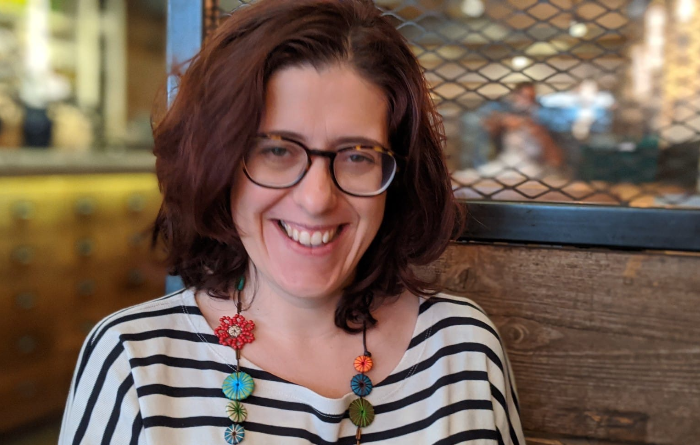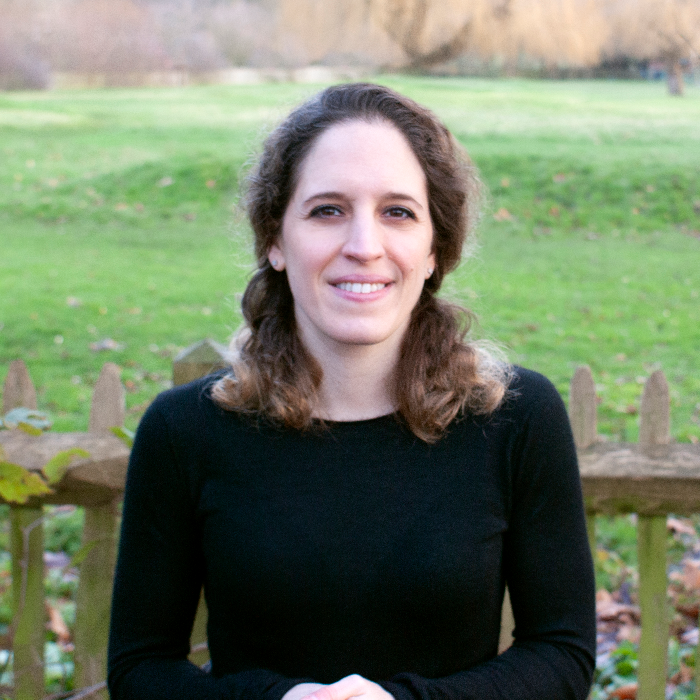Pioneers: Then and now
35 years ago, four women took to the stage at the ░─├┼═§ųą═§ to reflect on their careers in an event titled Pioneers: Women Architects and Their Work. Jane Drew, Pat Tindale, Elaine Denby and Rosemary Stjernstedt had all enjoyed success within architecture, but each had faced obstacles as women making their way in a male-dominated profession. Jane Drew describes being barred entry to the ░─├┼═§ųą═§ Council Club until her husband, Maxwell Fry, resigned in protest. Pat Tindale found herself one of only very few women in key positions at the Ministry of Housing. Rosemary Stjernstedt got a job for the Civil Service, only to then be told her pay would be two thirds that of what a man would be paid for the same job. Entering the architecture profession would have been harder still for women who experienced additional forms of prejudice and discrimination, including women from different ethnic and racial backgrounds and those with disabilities, whose voices were absent from the 1986 event.
At the same time, Pat Tindale recalls a curious silver lining for women training to become architects during the Second World War: “Whereas all the chaps were called up [for military service] … the women at any rate could go on to intern”. Perhaps surprisingly, some of the speakers conclude their talks by saying that they experienced little discrimination in the profession, despite describing inequalities of opportunity, access and pay. Nevertheless, Jane Drew finishes by describing the reluctance of Shell London to consider hiring a woman architect: “So your battle, ladies, is on”.
To mark International Women’s Day 2021, we’re releasing the archival recordings of the event, held in the ░─├┼═§ųą═§ Collections, online for the first time. This year the International Women’s Day theme is Choose to Challenge and each of these women challenged the prevailing norms of the profession in their own way.
In reflecting back on these women’s words, we spoke to some present-day women architects to explore how much has changed, what work there is still to do, and what we – as an Institute and a wider profession – are doing about it.
Listen to the full recordings from the 1986 event below.
Jane Drew recalled being denied entry to the ░─├┼═§ųą═§ Council Club, while Rosemary Stjernstedt was told she couldnŌĆÖt attend carpentry classes. Are there still spaces that explicitly or implicitly exclude women? What role can architecture play in making spaces more inclusive?
Tina Saaby (City Architect of Gladsaxe, Denmark): Architecture can be a contributing factor to our cities: their physical setting as well as the feeling of being safe, inviting and accessible. The "cohesive city" is often challenged by missing paths, dark and narrow passages, and dead ends. Anyone can feel insecure when paths are lit from above, removing the possibility for eye contact. Fences and bushes can lead to dead ends and getting lost.
Architecture can play a crucial role in creating inviting cities and contexts, neighbourhoods and places, based on making people of all genders, ages and ethnicities feel safe and welcome. It requires a cross-cutting approach to urban leadership.
Maryam Al-Irhayim (░─├┼═§ųą═§ Vice President of Students and Associates): Even the design of a street can have an impact on the paths home. There is largely still a boysŌĆÖ club mentality sometimes. The power and viewpoints women have to architectural design is important. They provide new insights.
Mina Hasman (Associate Director, SOM): Highlighting contributions by women to the built environment strengthens our collective impact and contributes to a more inclusive and equitable design culture. Enhancing equity in design is essential to cultivating inclusivity, allowing our communities to grow and thrive.

Jane Drew and Rosemary Stjernstedt both mention having to consider childcare and the needs of their children when making decisions about their careers, especially as they were both single parents for a period. Do you think considerations of family life disproportionately impact womenŌĆÖs careers, and particularly single parents?
Grace Choi (Director, Grace Choi Architecture Ltd): We need to recognise that there are still barriers in architecture that negatively impact career progression for mothers. Unless we challenge the culture of working long hours with little work-life balance, and question what success looks like nowadays, this will continue. It should be possible to practice architecture and have a family without feeling guilty or compromised, if the environment we work in supports this. Without support at work or home, balance can feel like an impossibility.
Fiona Welch (Architect, Collective Architecture): The current situation has meant family life and work have collided in a visible way, and a positive outcome is that childcare has been highlighted as an issue for all working parents, not just women. It has been positive to see how colleagues, clients and consultants have balanced work and childcare, regardless of gender. If families were made up of partners on equal pay, or the gender pay gap was eliminated, then decisions about reducing hours for family responsibilities could be made based on other criteria and not just the financial impact on the household.
The most obvious impact on career progression in relation to children is the period of parental leave ŌĆō stepping back from projects to then return after an extended time out of the office. Shared parental leave can level the field, in that it normalises men being absent from practice for longer periods of time as well.

Elaine Denby talks about the pressure to always be one step ahead and to be prepared for arguments with contractors, and describes the experience of ŌĆ£looking a foolŌĆØ at site meetings. In your experience, is there pressure for women architects to meet an even higher standard of professionalism than men?
Maryam: I think itŌĆÖs about perception. A man is viewed as passionate and sharp because he cares about the detail, while women are societally perceived as angry. SheŌĆÖs ŌĆ£aggressiveŌĆØ when trying to communicate her points. I think the dismissal of opinion and lack of respect can make women feel misunderstood, even though their points are coherent and valid.
Grace: In my past, I created a sub-conscious work persona, which left the real Grace outside the office door. I think many people do this, to become the person that their environment around them welcomes. For women in a male-dominated environment this might result in feeling like we need to prove ourselves, working harder, longer hours, pushing for perfection and achievements more than looking after ourselves. This isnŌĆÖt sustainable. If the environment doesnŌĆÖt welcome women, donŌĆÖt expect women to stay, especially once they have children.
Stefanie Stead (Director, Stead & Co): Oh gosh yes. I feel women really need to know their stuff on site ŌĆö especially small ones. In my experience the larger sites have been much more inclusive, but small residential builders do not like being told what to do, especially by a woman. It was bad enough when I had an electrician come round to my own home and insisted on talking to my partner!

Pat Tindale mentioned how significant it was to have Dame Evelyn Sharpe as Permanent Secretary at the otherwise male-dominated Ministry of Housing. How important have you found the role of women in leadership positions? Feel free to mention any examples.
Stefanie: I think it is important to have women in leadership positions, or at the very least be visible. For me, it is less about inspiring women to progress (although there is an element of this) but rather to demonstrate to men that it is both normal and incredibly valuable to have a female perspective at the table. It is important that women are involved in the commissioning and constructing of the built environment, as well as the design of it, in order to have a built environment that is truly responsive to the wider needs of society.
Maryam: [Past President of the ░─├┼═§ųą═§] Jane Duncan really advocates inclusive representation. I think we need more people who practice what they preach. My mother wanted to be an architect, but at that point it was still viewed as a largely male-dominated profession, so she was discouraged from it. I think I am fortunate today to be able to study architecture and represent women everywhere.
Mina: Having women in leadership is key to driving equity. We've seen time and again the positive impacts of representation, particularly in the design space where projects can improve in very tangible ways by introducing more voices into the conversation. This rings true at SOM, where our global leadership team is now composed of three women: Carrie Byles, Xuan Fu, and Laura Ettelman, who collectively have decades of experience building a more equitable industry, not to mention their incredible portfolio of projects.
I find Dame Jo da Silva ŌĆö who recently received a Damehood for her contribution to humanitarian relief ŌĆö particularly inspirational. Having established AID, a non-profit organisation within a major engineering firm focused on social impact in vulnerable communities, she is a strong role model for our industry.
What next?
These archive recordings, presented alongside contemporary views from women working today, emphasise the systemic issues which continue to impede womenŌĆÖs success and perpetuate intersectional inequality.
To improve gender equality in architecture, the ░─├┼═§ųą═§ has, in the past, developed its own internal action plan, as well as guidance for members (for example the gender pay gap guidance published in 2019). But itŌĆÖs clear that much more work needs to be done. Last year, ░─├┼═§ųą═§ Chief Executive Alan Vallance committed to "putting our house in order". We now need to follow through on this and tackle these systemic issues in a much more targeted way.
Over the next year we will be working closely with members and staff to develop policies and guidance to address a number of key issues, including menopause and menstruation; caregiving and acknowledging the burden of unpaid womenŌĆÖs work; and slowing and reducing the off-ramping of women mid-study and mid-career. We will be sharing updates on our progress ŌĆō as we ensure that the ░─├┼═§ųą═§ works hard to support our members and staff to deliver inclusive cultures.
Finally, we encourage ░─├┼═§ųą═§ staff, members and the wider profession to share the actions you are taking ŌĆō big or small ŌĆō to challenge gender bias and inequality in the profession. Share a selfie of you at work and share your action with us on Twitter, using , and .



